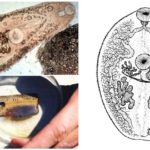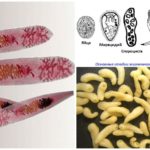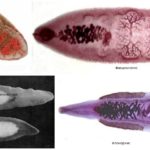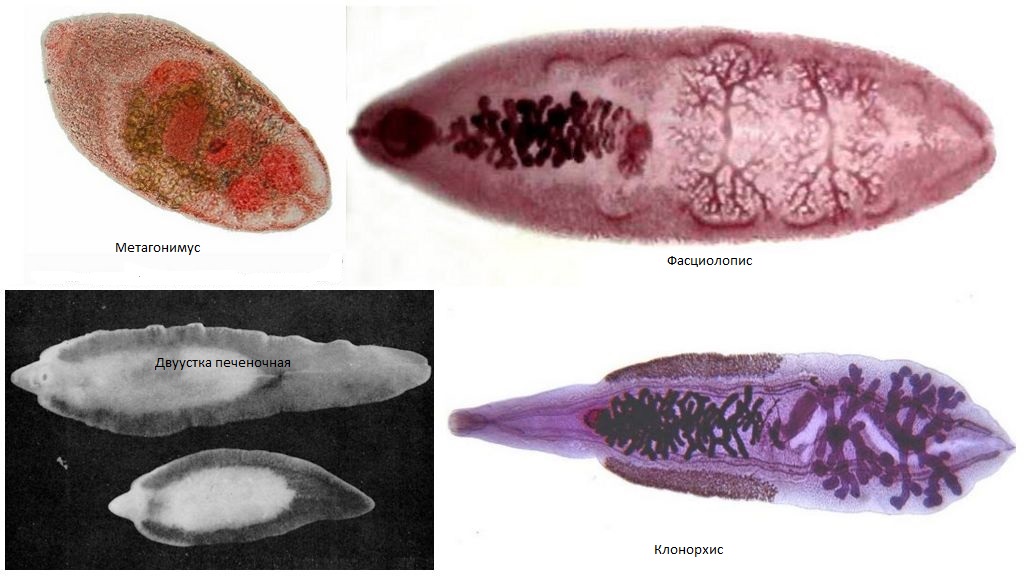Description of trematodes
Content
- Trematodes
- Trematode cycle
- Types of flukes
Trematodes are representatives of worms from the type of flatworms. If you translate their name from the Greek language, it will look like "having a sucker." Another name for the trematode class is flukes. Representatives are quite numerous and only about forty species can develop in their human body.Representatives of trematodes cause severe pathological processes in the host, in which they parasitize. These diseases are called trematodoses and can even be fatal. Such types of diseases as opisthorchiasis, schistosomiasis, fascioliasis, clonorchosis and dicroceliosis are distinguished.
Who are the trematodes
If we consider what the flukes look like, then it is correct to note that the shape of their body looks like a leaf. But different species have their own characteristics and differences. Photo trematodes shows that their outlines may differ so much that they take on an almost round shape or pear-shaped shape.
Interesting!
The size of the worms can vary too. If we talk about all possible representatives, it is from a few millimeters to a meter and a half. Those that are parasitic in humans, can reach eight centimeters.
Characteristics of the external and internal structure
The structure of trematodes is quite primitive. Their body is deprived of a cavity like that of nematodes or segments like cestodes. Trematodes consist of a special type of epithelium called the syncytial tegument. The whole worm is as if placed in a bag consisting of muscles and skin.At one end of the trematode is a suction cup, which simultaneously serves as an oral and anus. It is necessary for feeding the parasite. Another sucker is located below and is used by trematodes as a fastening tool.
On a note!
The parasite lacks a sensory system, but otherwise the trematodes are full-fledged microscopic organisms.
Trematode digestive system
Oral sucker has a bottom on which a mouth is located. This hole continues into the pharynx and esophagus. The next section of the digestive tract are two blindly ending intestinal canals. Leftovers that have not been digested go the same way as they came.
Trematode excretory system
From each cell surrounded by cilia, near the trematodes, very thin tubules are drawn, which group together and form larger reservoirs, which are called canaliculi, and by means of them leave the opening at the rear end of the parasite.
Trematode nervous system
The trematodes have some semblance of the brain, represented by a ganglion.From this node along the body stretch the nerves, 2 each in the ventral, dorsal and lateral parts. Those trunks that are located on the sides, have connections with each other.
Interesting!
The larval stage of the flukes has certain sensory organs, represented by the ocelli and epithelial receptors.
Genital system of trematodes
Trematodes have a hermaphroditic reproductive system, but their fertilization is of a cross-type. This does not apply to those parasites that belong to the inhabitants of the blood. These species are dioecious and all life are in pairs. Their female is smaller and the male places it in a specialized fold. There the female exists in the state attached to it all her life.
Eggs
The morphological features of trematode eggs are an oval shape, an impenetrable shell and a special cap by means of which the larva leaves the egg and enters the environment. In some species, eggs have an irregular shape and have thorns and processes. The color of eggs in trematodes ranges from light yellow to dark brown.
Features of the life cycle of trematodes
Before considering the general characteristics of the life cycle of trematodes, it is necessary to understand some of the concepts.
- Marita. An individual worm that has reached puberty.
- Miracidia.This is the first stage of the larval stage.
- Sporocista. Second larval stage. During this stage, the larva develops the possibility of parthenogenetic reproduction.
- Redia and cercarium. This is the third and fourth larval stage, respectively.
- Adolescarius is a reincarnation in an adult, which, once in the body, may be a provocateur of diseases.
- The ultimate owner. This is the name of an organism in which a mature parasite lives and multiplies.
- The owner of the intermediate type. It is an organism in which worms develop, being in the larval stage.
The scheme of the life course of trematodes has significant differences from other pathogenic pathogens. They have in addition to the main and intermediate hosts.
On a note!
The development cycle of trematodes is more complex in comparison with other worms. In addition to the final and intermediate host, there are also additional ones. As the last various animals act.
Mature helminth lays eggs, which, with secretions of the main host, fall into the water or soil. The embryo formed in the egg for the next stage of development must enter the mollusk.Otherwise, he just dies. The development of larvae occurs in the mollusk, and the formation of cercariae, which have all the signs of an adult. Having formed, the cercariae leave the mollusk and exit into the aquatic environment, where they swim, awaiting a new host. This may be optional or final. In the first case, trematodes turn into metacercariae and overgrow with a capsule. The larvae of some species are attached to plants growing near the coast and turn into adolescaria. These are the main stages of development of trematodes.
On a note!
Many of the formed helminth larvae are doomed to death due to such a complex development process, but nature has compensated for this with the ability of the larvae to reproduce, as well as a large number of eggs that produce mature individuals.
What are the flukes
There are many different types of flukes (members of class Trematoda) and the table below shows their distribution and the possibility of human infection.
| Worm type | Infection, habitat |
|---|---|
| Fasciolopis | Plant food. Eastern Eurasia |
| Heterophis | Mullet or tilapia.European East, Asian and African countries |
| Metagonimus | Meat carp or trout. Siberian latitudes |
| Gastrodiscoides | Plant food. Indian and Philippine Islands |
| Clonorchis or Chinese fluke | Any fish. East Asia and North American countries |
| Hepatic liver | Plant food. Everywhere |
| Cat litter | Crabs and crustaceans from freshwater. Asian countries |
| Pulmonary flukes | Carp family of fish. European and Middle Eastern regions |
The most famous flukes, which parasitize in man, are divided into schistosome and non-chistomea. The first live in the blood, and the rest in the lungs or liver. Blood flukes are parasitic in the blood of their host and live in hot countries. Infection with such a parasite is easy when bathing in dirty waters. This is due to the fact that cercariae of this species emerge from mollusks and move freely in the water column until they stumble upon a person into whom they enter, penetrating through the skin.
Other species of trematodes enter the human body in the form of metacercariae, which a person swallows along with fish, crustaceans, or plants that have not been carefully processed.They parasitize in the gastrointestinal system.











